North Dakota is second only to Alaska as the coldest state in America.
Fargo gets the most snow in that state, so that makes for a long hard winter.
The city has a lot of good things like a lower cost of living, lots of outdoor activities, and a good quality of life.
If you can stand the cold, and you like the outdoor lifestyle, Fargo could be a good choice for a place to live.
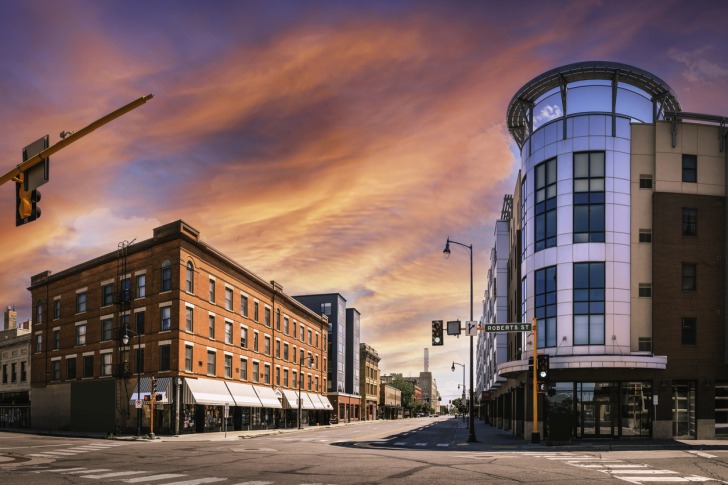
Contents
Pros of Living in Fargo, North Dakota
1. Quality of Life
Fargo has a deserved reputation for very cold and harsh winters, but it has enough positives to make that bearable.
Housing and the overall cost of living are lower than in most of the country.
Wages are high, especially with the influx of money from the oil industry.
The population has grown slowly but steadily over the years.
It has a dense urban feeling and has all the amenities you would expect in a good-sized city.
2. Cost of Living
It is surprising perhaps, but the cost of living is lower in Fargo than in most places around the country.
Even with fighting off the cold weather, utilities are still ten percent below the national average.
Housing is 17 percent lower and gas is generally three or four percent lower.
Groceries are slightly above the national and state average.
Overall costs are about six percent lower than the national average.
3. Housing
Houses in Fargo are 17 percent less than the national average.
By comparison, Minneapolis, MN. is just over an hour away, but houses are 18 percent less in Fargo.
The Median price home is $375,000, compared to the national median price which is about $450,000.
Renting is as much as 50 percent of the national average of $1,372.
An influx of workers can make housing hard to find at times, but that has not caused significant price increases.
4. Biking
Fargo has more than 200 miles of trails, and all of them can be used for bicycling.
In addition to trails, there are biking lanes throughout the city.
There are a lot of bike shops around town, and there is a bike-share program.
The city has an annual event called Ciclovia, dedicated to the hobby of bicycling.
Streets are often not very crowded, so cycling is pretty safe all over town.
There are trails along the Red River, from the north to south ends of town.
5. The Red River
The Red River separates North Dakota and Minnesota, and the river makes up the eastern edge of Fargo.
The city started on the bluffs of the Red River and expanded along the river.
There are about 10 parks along the river and a series of trails linking them all.
The river makes the area scenic, even in winter when it is covered with snow and very cold.
There are also many recreational activities involving the river.
The currents are dangerous, however, and swimming in the Red River is not recommended.
6. Strong Arts Culture
People in Fargo take art seriously, and there are several museums and art centers to experience all of it.
There are several arts-related festivals in Fargo, like the Winter Blues Festival, Fiber Art Festival, and Frostival.
There are murals spread all over town, and you can get a map to track them all down.
Music, theatrics, and visual arts are all popular here.
You can experience a lot of it, and can easily find opportunities to learn and develop your own art.
7. Food
North Dakota has a lot of German and Norwegian influences, and there are a lot of Native American influences as well when it comes to the cuisine of Fargo and North Dakota in general.
A traditional local favorite is called “hot dish” which is a hearty meal for a cold winter night.
There are a lot of cattle grown in North Dakota, and that means there are a lot of steaks available, and a price lower than you would expect.
The steaks are great, and you can get Bison steaks just as easily.
German and Norwegian pastries are also something that needs to be experienced.
8. Low Unemployment
Unemployment has remained below two percent for a few years in Fargo.
It is currently at 1.8 percent, and a year ago it was 1.6 percent.
Statewide the rate hovers around two percent.
Part of the reason is a lower population, meaning there are fewer people competing for jobs.
There are a lot of jobs available, and often companies have a hard time finding people to work.
According to government officials, when the unemployment rate is below three percent, the job market is concerned close to full capacity.
Cons of Living in Fargo, North Dakota
1. Winter
The absolute worst thing about Fargo is the harsh winter.
There is usually snow on the ground from October until May.
There are often at least three inches on the ground until the spring thaw.
Fargo averages 40 inches of snow per year and had 56 last year.
Temperatures are often below freezing for several weeks at a time, and often below zero.
In January the average temperature is 19 degrees.
There are also wind chills to consider.
Fargo gets the most snow of any city in North Dakota.
There are winter sports to enjoy, however.
North Dakota is the second-coldest state in the United States.
2. Isolation
The winter is harsh, and you may be tempted to stay inside for several months of the year.
In the larger scheme of things, Fargo is not very big and not very close to any large cities.
It is easy to develop a feeling of being isolated from the rest of the country, and some people might think that is a positive.
The long cloudy winters can lead to depression, which only adds to feelings of isolation.
It is one of the hardest things to adjust to for newcomers.
3. Crime
The crime rate in Fargo is a little high, but higher than anywhere else in North Dakota.
There are 5.2 violent crimes per 1,000 people in Fargo, compared to the national average of 4.0, and the state average of 2.6.
There are twice as many rapes in Fargo than the national average.
The national average is .42 per 1,000, and in Fargo, it is .95.
Property crime is more than double the national average.
In Fargo, it is 44.7 per 1,000, compared to the national average of 19.
Car theft is twice the national average.
4. Boring Landscape
Apart from the scenic Red River, there is not much natural scenery to enjoy around Fargo.
It is flat land, and most of that flat land is wheat fields.
What is not wheat fields, are fields for cattle to graze.
If you leave Fargo in a car, in any direction, it will be a lot of miles before you see anything other than a wheat field.
It can get tedious.
There are also not a lot of trees, especially if you compare it to the southern states.
5. Lack of Diversity
About 80 percent of Fargo is made up of white people, and most of those are of German or Norwegian descent.
That is a strong majority, but that does not leave room for much diversity.
About eight percent are black, four percent are Asian, and a small percentage of Native Americans.
There have been more people moving into the area in recent years, and that may help some with diversity, but as of now, there is not a lot.
6. Limited Nightlife
If you are coming from a major city that has a strong nightlife, you might be disappointed in Fargo.
There are plenty of things to do, but a lot of concerts and late-night partying are not among those things.
There are a few bars, but not a lot, and none of them stay open all night.
There are lots of places to go and have fun, but it may be limited if you are used to a much more active scene.
7. Transportation
Apart from the downtown, and the Red River, Fargo is not a great town for walking.
It is a great town for bicycling, but not in winter.
You need a car to get around.
Things are not really close to each other, so walking can be difficult, especially when the city is not designed for walkers.
There is not much public transportation available.
8. Far From Everywhere
Fargo is a nice-sized city that has about anything you would need, but if you want to go somewhere, you may have a long trip ahead of you.
Minneapolis is a major city that is two hours away, and it’s a lot further than other large cities.
Fargo has an airport, but there are not a lot of direct flights to major cities.
To drive anywhere will take several hours.
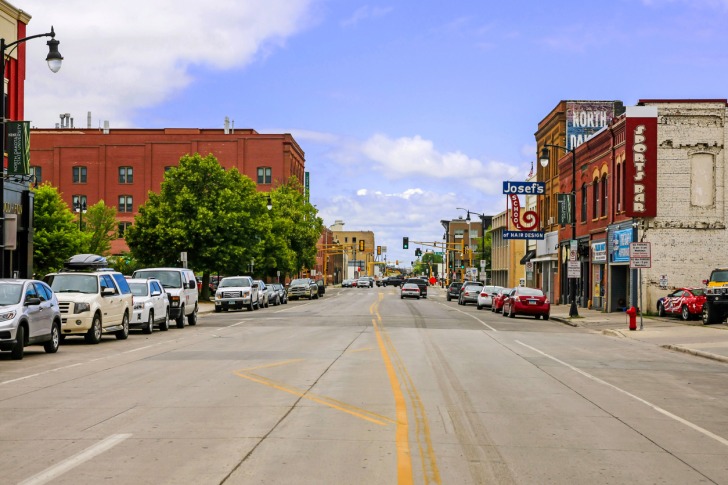
Pros and Cons of Living in Fargo, ND – Summary Table
| Pros of Living in Fargo, North Dakota | Cons of Living in Fargo, North Dakota |
|---|---|
| 1. Quality of Life | 1. Winter |
| 2. Cost of Living | 2. Isolation |
| 3. Housing | 3. Crime |
| 4. Biking | 4. Boring Landscape |
| 5. The Red River | 5. Lack of Diversity |
| 6. Strong Arts Culture | 6. Limited Nightlife |
| 7. Food | 7. Transportation |
| 8. Low Unemployment | 8. Far From Everywhere |
Fargo Safety Overview
READ THE FULL REPORT: Fargo Safety Review
Safety Index: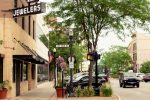
- OVERALL RISK: MEDIUM
- TRANSPORT & TAXIS RISK: MEDIUM
- PICKPOCKETS RISK: MEDIUM
- NATURAL DISASTERS RISK: MEDIUM
- MUGGING RISK: MEDIUM
- TERRORISM RISK: LOW
- SCAMS RISK: MEDIUM
- WOMEN TRAVELERS RISK: MEDIUM
Frequently Asked Questions
Why was Fargo, ND started?
Fargo was settled in 1871 by homesteaders where the Northern Pacific Railroad would cross the Red River.
The city was built on the Red River bluffs.
Across the river is Morehead, MN.
The railroad was the driving force of both cities.
Fargo is named after a Wells Fargo founder, and Morehead is named after a railroad official.
What does the term Bogusville mean?
Speculators tried to find out where the railroad would cross the Red River, to buy the land.
The railroad company released fake maps to throw them off.
The fake map marks the spot that was called Bogusville for many years.
The area is now called Oakport, MN.
What were the most extreme snowfalls Fargo has had?
The Blizzard of 1966 had four days of 70 MPH winds, causing snowdrifts as deep as 40 feet.
In 2006 there were 117 inches of snow measured in the city.
The average is 55.
It had 16 inches in a single day in 1982.
What percentage of people in North Dakota live in Fargo?
About a third of the state’s entire population lives in this city.
Fargo, and West Fargo, make up the largest metropolitan region of the state by far.
Of the state’s 775,000 people, 258,000 of them live in the Fargo Metropolitan area.
What world records does Fargo hold?
In 2008 the city had the largest pancake feed in the world, feeding 35,000 people pancakes in a single day.
The city has also constructed the world’s largest Holstein cow, 38 feet tall and 55 feet long.
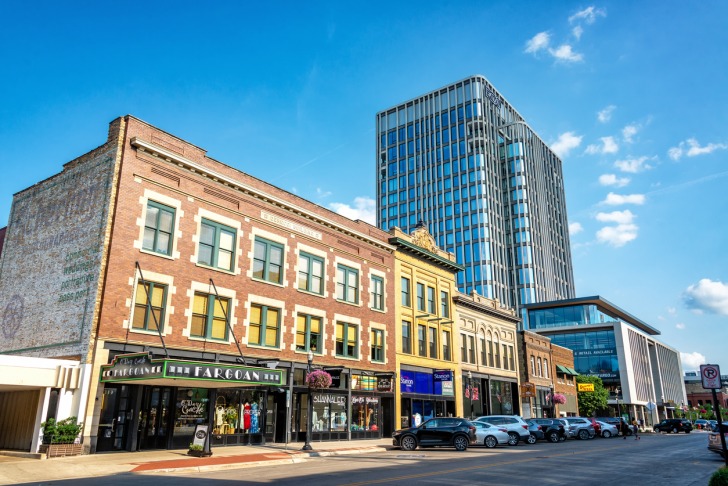
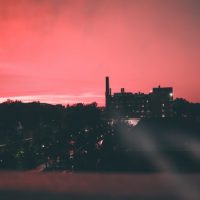
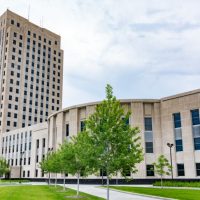
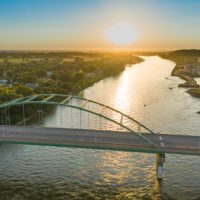
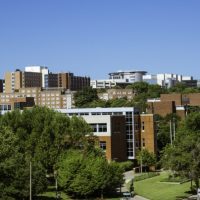
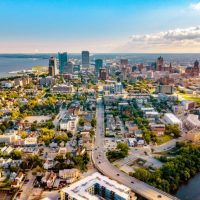
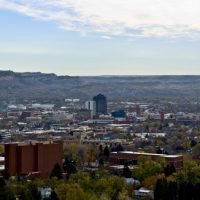





Fargo, North Dakota has a lot to offer in terms of quality of life and cost of living.
The harsh winters and lack of diversity may not be suitable for everyone.